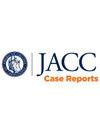心肺运动试验指导下窦房结功能障碍耐力运动员起搏器率反应优化
Q4 Medicine
引用次数: 0
摘要
使用永久性起搏器治疗窦结功能障碍的运动员可能会出现与次优心率反应起搏相关的运动不耐受,通常只发生在峰值或长时间的努力期间。标称起搏器速率调节设置不能很好地概括生理运动。我们报告一例70岁的终身跑步者,因窦结功能障碍植入永久性起搏器,表现为运动不耐受和用力时呼吸困难。结合最大努力心肺运动试验和设备询问产生了优化的起搏器设置,解决了他的症状。高活动性窦结功能障碍患者在运动时依赖于心率反应起搏。针对高强度运动,优化起搏器功能,缓解症状,提高表现。我们的案例强调了结合最大努力代谢、运动和设备测试的运动员量身定制方法的重要性。本文章由计算机程序翻译,如有差异,请以英文原文为准。
Cardiopulmonary Exercise Testing–Guided Optimization of Pacemaker Rate-Response in an Endurance Athlete With Sinus Node Dysfunction
Background
Athletes with a permanent pacemaker for sinus node dysfunction can experience exercise intolerance related to suboptimal rate-response pacing, often isolated to periods of peak or prolonged effort. Nominal pacemaker rate modulation settings do not recapitulate physiological exercise well.
Case Summary
We present a case of a 70-year-old lifelong runner with implanted permanent pacemaker for sinus node dysfunction presenting with exercise intolerance and dyspnea on exertion. A combined maximum effort cardiopulmonary exercise test with device interrogation produced an optimized pacemaker settings profile which resolved his symptoms.
Discussion
Highly active patients with sinus node dysfunction depend on rate-response pacing during exercise. Optimized pacemaker function for high intensity sports can relieve symptoms and improve performance. Our case highlights the importance of an athlete-tailored approach combining maximum effort metabolic, exercise, and device testing.
求助全文
通过发布文献求助,成功后即可免费获取论文全文。
去求助
来源期刊

JACC. Case reports
Medicine-Cardiology and Cardiovascular Medicine
CiteScore
1.30
自引率
0.00%
发文量
404
审稿时长
17 weeks
 求助内容:
求助内容: 应助结果提醒方式:
应助结果提醒方式:


